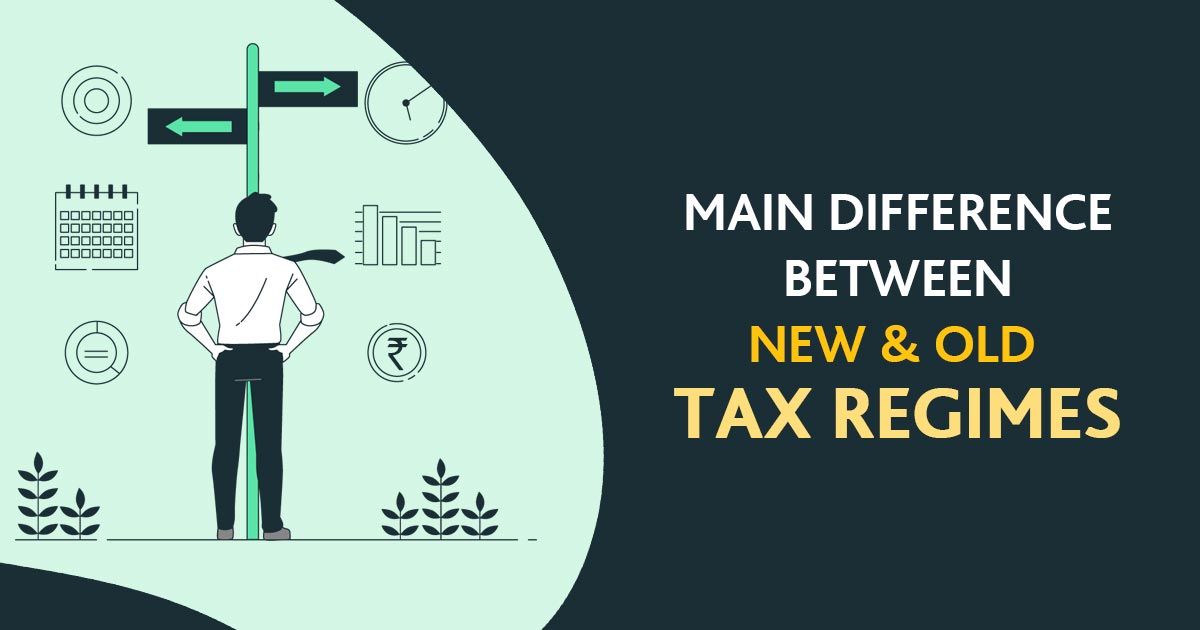
This is the time of year when employees of many firms start receiving requests to share details of their tax-saving investments with their employers. However, before that, you have to choose whether you want to opt for the new tax regime or the old tax regime.
Budget 2020 has come up with a new tax regime as per Section 115BAC of the IT Act, 1961, that allows specific and Hindu Undivided Family (HUF) taxpayers to pay income tax at lower rates. After the financial year 2020 -21, the taxpayer can either choose to pay income tax within the new tax regime or continue with the old tax regime.
“Ruchika Bhagat, a chartered accountant, and MD of Neeraj Bhagal Co, a chartered accountancy organization, said that If you want to opt for the newer ones, then employees will have to inform their employer via the declaration form. Then the employer will accordingly start deducting TDS monthly.
In case you are not able to clearly choose between the new and old tax regimes to go for, here are a few important things that can assist you in reaching a conclusion.
Analyse the Tax Slab Rates
Different slab rates are one of the main differences between the old regime and the new tax structures. Some taxpayers pay income tax according to the slab system they belong to. The tax slabs are made by keeping the income of the specific in mind. Thus, people with higher incomes will pay more.
There is no difference between the tax rates for certain earnings up to ₹ 5 lakh annually. The variation in the rates starts showing thereafter. For example, those who have income between ₹ 5 lakh and 12 lakh per year will pay no tax within the new tax regime, against 20 percent upto 10 Lakh and 30 percent above 10 Lakh in the old regime (subject to some conditions).
Likewise, those earning between ₹ 12 lakh and ₹ 16 lakh would pay tax at the rate of 15 per cent under the new tax regime compared with 30 per cent under the old regime.
For earnings up to ₹ 5 lakh annually, there is no difference in the tax rates. After that, the change in rates starts showing. For those whose annual income is between ₹ 5 lakh to ₹ 10 lakh, there is no tax as per the new tax regime; the same was attracting 20% tax in the old regime.
Similarly, people earning between ₹ 8 lakh and ₹ 10 lakh will have to pay tax at the rate of 10% under the new tax regime; the same people were paying 20% under the old regime.
With both arrangements, the basic tax rate again becomes the same for people earning more than Rs 24 lakh annually.
Check the Benefits of Tax Deductions & Exemptions
One more well-known difference between the old and the new regimes is the option to decrease taxes. Ruchika Bhagat said that no deduction is allowed under the new tax regime. A taxpayer has many options in the old tax regime, but in the new tax regime, one can claim either zero deduction or tax exemption.
In addition, under the old system, taxpayers have about 70 exemptions and deductions to lower their taxable income. This refers to grants to taxpayers to reduce the tax amount by saving, investing, or spending on certain items.
The massive deductions have been permitted under Sections 80C, 80CCC, and 80CCD. Additionally, with it, one can declare deductions as per sections 80D, 80DDB, 80E, 80EE, 80G, 80TTA, 80RRB, 80IA, 80IB, 80JJA, 80JJAA, 80LA, 80QQB, 80RRB, etc.
Ruchika further added that if we take exemptions and deductions, significantly lower tax expense to cover the excessive tax rate you may be paying, calculate before making a decision. Bhagat says that the advantages of the old tax regime or the new tax regime will change from person to person. She says that only the income and options available to the taxpayer can tell which one is beneficial to him. Most exceptions are part of one’s salary, such as House Rent Allowance (HRA) and Leave Travel Allowance (LTA).
“Nitin Mohan Kashyap, a chartered accountant associated with Coopers Tax Consulting, a tax consulting organization. Says that This new tax regime removes most of the deductions and exemptions otherwise available to the taxpayer. Thus, the taxpayer has to be very careful and compare whether his final tax liability will be less if he opts for the new tax regime. He illuminates how the fresh tax regime may seem complex for several.”
“Kashyap further added that Those opting for the new tax regime need to prepare two sets of tax calculations to arrive at a decision, which will again be a daunting task for a taxpayer considering complex tax laws. Again no straight-jacket formula can, in general, give a clear distinction between the two options, and it depends on a case by case basis what is best for the taxpayer.”
The new tax regime may be beneficial mainly for those taxpayers who do not seek deductions and exemptions, as the tax rates under the new tax regime are lower.